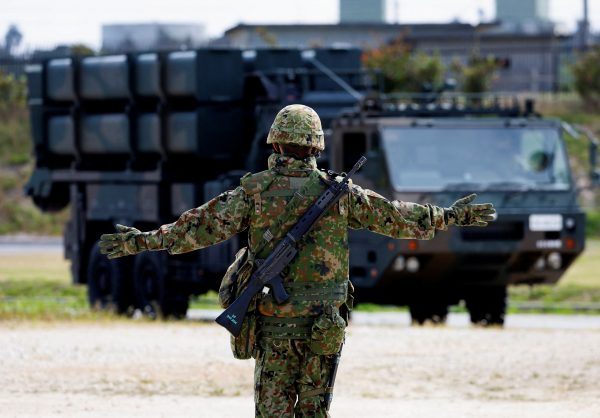For Japan, counterattacks will serve as the offensive face of its defence and deterrence strategy against enemy missiles, allowing Tokyo to hurt the enemy while also weakening its ability to carry out subsequent attacks.
The Japan Self-Defence Forces (SDF) have a large-scale ballistic missile defence system that consists of the SM-3 interceptor and PAC-3 air defence missile. But there have been significant advancements in Chinese, North Korean and Russian missile technology, including the acquisition of hypersonic glide vehicles and manoeuvrable warheads. These are hard to intercept and hard to build defence capabilities against in the short term.
While the LDP’s recommendations are influential in determining the Japanese government’s defence planning, whether they will be fully reflected in the upcoming NSS and NDPG is debatable.
Many in Japan either oppose or are uninformed about counterattacks, leading to domestic political opposition. But the argument that counterattacks violate the Japan’s constitution and policy of only maintaining capabilities that are the ‘minimum necessary for self-defence’ is misguided. Resorting to a counterattack when no other means of defence are available was determined to be constitutional by the Hatoyama administration in February 1956. The ability to conduct counterattacks is not banned under international law and is a capability possessed by all states in East Asia.
The costs will also come under question. Though Prime Minister Kishida has vowed to lift the self-imposed cap on defence expenditure, there will be pushback from some politicians, the public and the Ministry of Finance.
Japan is already working towards acquiring capabilities that were initially justified for the defence of remote islands but could be used for counterattacks. This includes acquiring the Air-to-Surface Standoff Missile (JASSM-ER) and extending the range of the Type 12 surface-to-ship missile to 900 kilometres and eventually to 1500 kilometres.
There are policy discussions about acquiring longer-range capabilities, such as the domestic Tomahawk missile with a range of 2000 kilometres, submarine-launch cruise missiles and medium-range ballistic missiles as a more effective means of conducting counterattacks. But while Japan is already funding these assets, there will be immense costs to operationalise the platforms. Given the costs of operations and maintenance, hosting US forces stationed in Japan and other necessary assets, Tokyo will need to make trade-offs.
The more important question is whether the ability to conduct counterattacks is a cost-effective option for Japan. Strategically, it raises questions of a security dilemma, with some arguing that Japan’s move will trigger hot reactions from China, North Korea and Russia. But given the threats Japan already faces, the risks that come from inaction could be far greater.
As for the Japan–US alliance, though Tokyo will continue to depend on Washington for high-end strategic strikes and require tactical support to conduct them, Japan’s ability to counterattack will allow the partnership to develop more diverse ways of defending against and deterring its adversaries.
Tokyo faces challenges in achieving these effects. First, many of China, North Korea and Russia’s missiles are launched from mobile platforms that are often dispersed and bunkered. Their command and control systems are also highly protected against strikes. Such features create problems in effectively identifying and destroying those assets — particularly with range — which would require combined and integrated operations with the United States.
Second, Japan will need to balance counterattack capabilities with other critical agendas to improve the SDF’s readiness. For example, Tokyo should establish joint theatre commands to improve coordination among SDF branches, enhance readiness for sea control and denial, enhance ballistic missile defence systems to intercept new missile technologies, ready itself for cyber and electronic warfare and prepare for the arrival of new and emerging technologies in new domains of warfare.
Third, Japan’s ability to conduct strikes depends on how it translates its conceptualisation of counterattack operations into actual doctrines. Beyond finding effective ways of dealing with the unique threats from China, North Korea and Russia, Japan also faces challenges in integrating its counterattack operations into existing defence doctrines.
Despite the tough domestic and international questions Tokyo will face, counterattacks are necessary to enhance Japan’s defence and deterrence capabilities against ever-growing threats. Even if Japan’s counterattack formula is not sufficient to defeat enemy forces, it will play a critical role in degrading their capacity to succeed.
Tokyo is still working on the details of these proposals and there is a chance that the LDP’s proposals will be moderated. But the ability to launch a counterattack — even in limited form — will set Japan’s defence planning on an important new trajectory.
Ryo Hinata-Yamaguchi is a Project Assistant Professor in the Research Centre for Advanced Science and Technology at the University of Tokyo and an Adjunct Fellow at the Pacific Forum.

